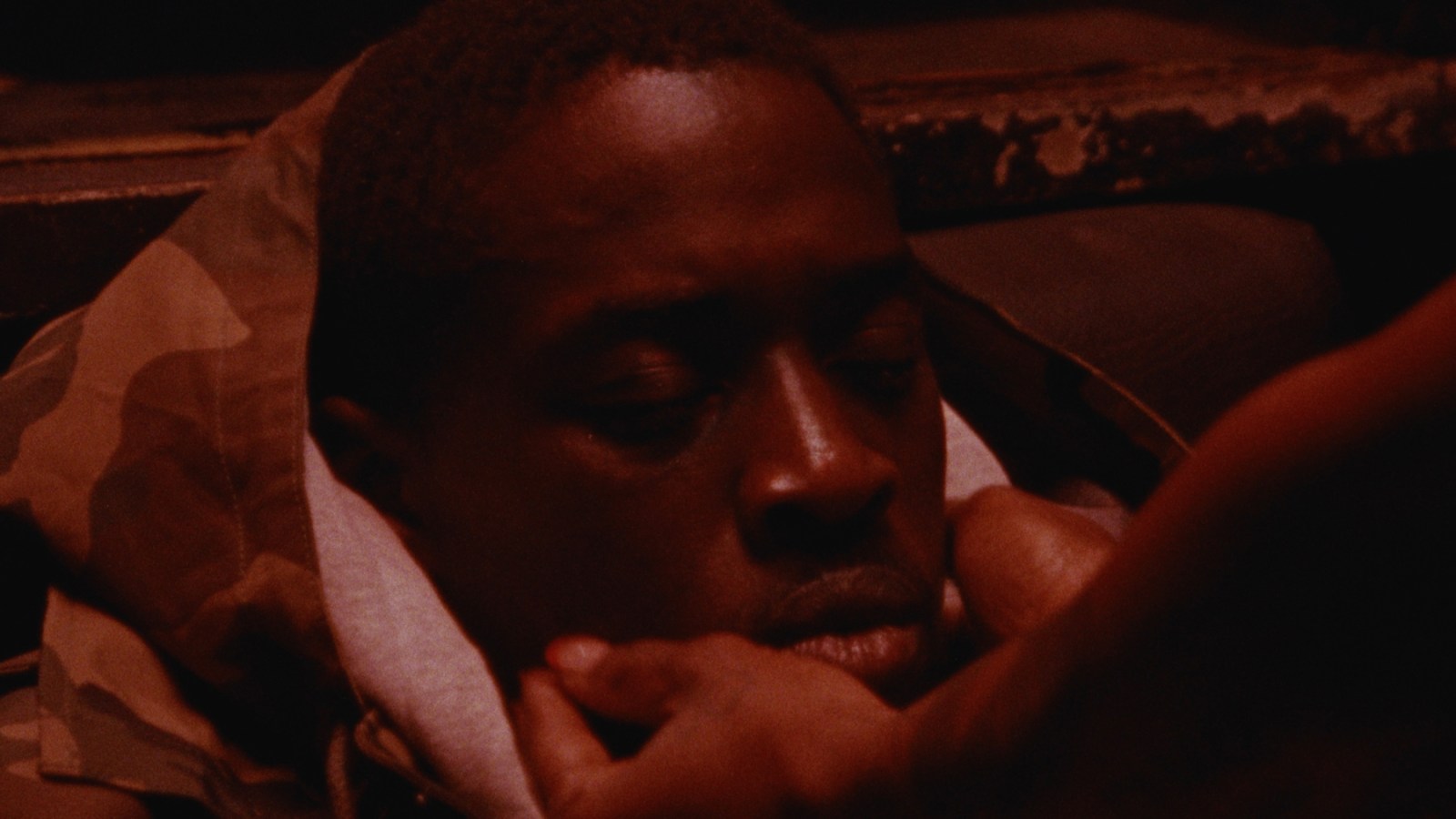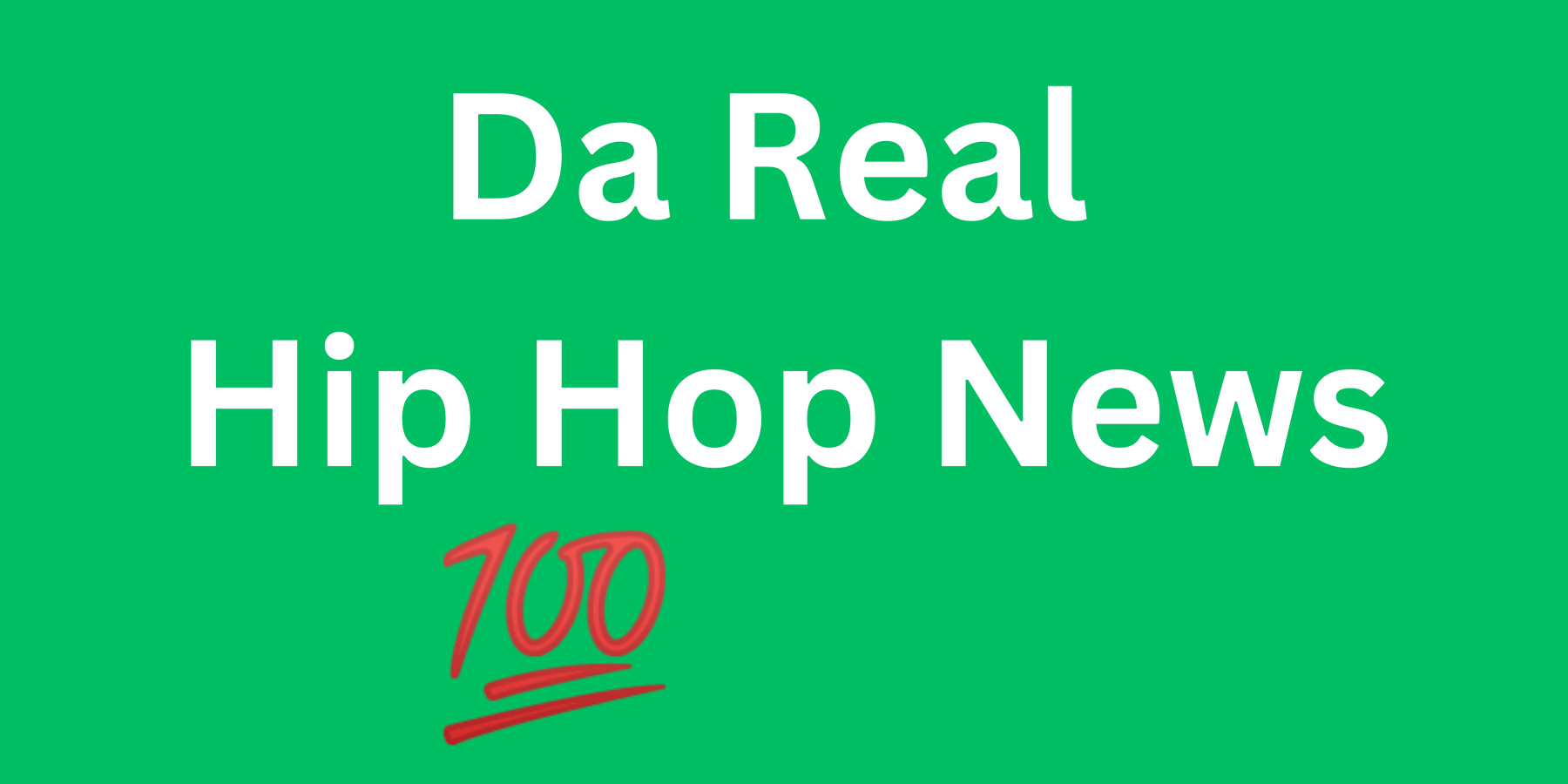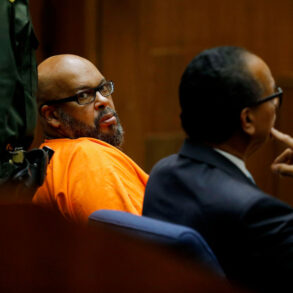
In photographer and filmmaker Gabriel Moses’ debut short film, The Last Hour, a man wakes up to find he’s got a timer attached to his chest. What follows is a quietly devastating meditation on the decisions that make up a life. The film paints a hyperreal portrait of a surreal situation, all set against the history-tinged backdrop of Black culture in Atlanta. Moses, who has worked on visuals for brands such as Louis Vuitton and GOAT, which provided support for this latest film, is a go-to figure in the rap world, having directed the music videos for Travis Scott‘s “FE!N” and “4×4.” As a director, he’s come to define a visual style that resonates with the current era of artists in its moodier textures.
Born in South London, Gabriel Moses started directing at the age of 18, making commercial work for brands like Nike while also branching out into photography, where he’s developed a distinct palette, capturing Black artists with a visual sensibility rooted in introspection and compassion.
The Last Hour premiered in London this spring, with a screening in Paris last week ahead of Men’s Fashion Week. Moses says more screenings around the world are on the way, and he’s also got plans to make a feature film, which feels like a natural progression for the rising young talent. Moses spoke with Rolling Stone about his creative process, filming in America, and working with Travis Scott. He’s also shared an exclusive clip from the film below.
‘The Last Hour’ Exclusive Clip
How did this project get started for you, and what inspired you to make a film?
I feel like that’s a natural progression within my career to go into that space. It’s something that I’ve always known I’m going to do, and obviously, I feel like it’s also important to give my audience that side of the work as well. In terms of the concept, it’s a story that I’d wanted to tell for a while, but I guess just finding the right way to tell it. At the same time, I’ve always believed in timing, and sometimes just because I want to do so doesn’t mean it should happen in that moment. So yeah, it was one of those where everything just kind of aligned perfectly, and therefore it was the time to work on something with that song.
How’d you land on the film’s premise?
It always starts with a question. I always like to make something that resonates with myself and makes me think. It was always just that concept of “What would you do if you knew when you were going to die?” I think about life and death a lot, just in general. I think about, “OK, what are the things that you might do if you knew when that time will come?” Because it is something we are, naturally as humans, quite ignorant of. We have control over a lot of things, but it’s that elephant in the room. We don’t know when. I thought it would be a good kind of time to explore that question and explore what someone who’s in a particular state does in that moment. Again, because I’ve always felt like there’s so many things that we do as human beings that if we knew when we were going to pass, we’d change about ourselves. Whether it is that person you love that you are not in communication with because of pride, or whatever. Some of us find out when it’s too late. So I wanted something that makes me think, and I hope it makes other people think as well.
Was it a deliberate decision for you to set the film in the United States?
Yeah, for sure. Off the back of Atlanta is a place that, after working quite a few times, I fell in love with the landscape and the people as well. I knew that Atlanta had the energy that I wanted to portray within this film. I’ve always found it a very special place. I felt it all just made sense to shoot the film in Atlanta.
You do a lot of work with musicians, especially in hip-hop. Was there any interaction between that work and what this ended up shaping up to be?
Yeah, I mean, I’d been to Atlanta before, and that was working with artists within the hip-hop space. So I guess that’s where it kind of connects. And also for me, music is a big part of my process when I’m writing, when I’m thinking of stuff, that’s playing a lot of the time. So yeah, for sure there’s an influence and there’s a connection between the two, but it’s more within my creative process.
Did you find any sort of creative throughline in the way you present photos and the way that you were organizing scenes and thinking of narrative?
I’m a bit of a madman in the sense that I love a bit of chaos. So it’s one of those where I know what I’m doing, but sometimes everyone else doesn’t. I kind of carried that into the process of the film as well, which can be quite a new experience for a lot of people who’ve been working with me. I make a lot of decisions right in the moment, and I don’t always put things down because I don’t like to box myself in. I work a lot around feeling. So it’s like, for me, I always leave an open window for myself to make last-minute changes, and in the end, it all comes together. I’ve always worked like that. The same thing with my photography as well. I’m not very systematic with the way I like to work. It’s like I’ll have the skeleton of it and then I’ll fill a lot of it in the moment.
What was the process like for you, casting a film versus casting for photo shoots?
A similar energy, because a lot of the time with my casting on photography, a lot of the time it’s like I know exactly what I want out of the character, but I’m also open to building the character around the real person. So, with this, a lot of it involved working with casting, watching tapes, and even meeting people out there, and realizing that, actually, that’s our character. I’m very fluid, and there are times I’ll meet a human being, and I’m like, you are actually the character. I love how you are, just as a person, and want to build a character around that. So I feel like that’s my style of filmmaking.
Before this, you had done a short film music video with Travis Scott. How did you guys, as a creative partnership, build over the past few years?
It’s been a really great process for me. I grew up in South London, and certain things would’ve felt so far away when I was a kid. To be able to call people such as Travis not just a collaborator, but a friend, has been a great process. To have respect and an appreciation is such an organic way of working where you both have an appreciation for each other’s craft, and you find a way to merge both worlds. I think we both have a mutual respect for what we do and the work we’ve done, and how we create this world that represents the way we both see the world and what we’re trying to say. And I have massive respect for him for also giving me the space to do my thing, because it is rare that people really care about the art first and foremost.
It seems like you’ve been able to offer a visual language to this current generation of hip-hop artists, thinking of your work with Carti as well.
For sure. But the same way I approach anything — if I do LV, I’m still myself. And it’s like, I’ve always wanted to be Gabriel Moses, the artist. I’ve never just wanted to do stuff for the sake of doing it. I feel like part of that is just having a perspective. And if I can’t bring my perspective to stuff, then I don’t really believe in working on it. I feel like I’m just being myself, and if anyone resonates with that, amazing.
This post was originally published on this site be sure to check out more of their content.








